My introduction to Ontario
I’m on the road again, this time about 3,200 kilometers from home, in southern Ontario visiting Cathy’s parents. This is my first trip to Ontario since a school trip in 1968, and my first real look at any of the province.
I found researching what to see and where to go in Ontario to be a difficult process to get started – with thousands of communities and roads, I never did come up with a good plan beyond the most basic. Here Nanook checks out the location of our hotel at Niagara Falls, which will be near the end of this trip.

The 3 Air Canada flights from Whitehorse to London on Sunday took just under 13 hours, and conditions were so poor for photography I didn’t take a single picture (!). Even though it was sunny across much of the country, the haze was so thick the ground could barely be seen.
Cathy’s mom had picked up some heritage and tour booklets for us, and I decided that seeing some small villages was how I wanted to get started, so on Monday, based on a brochure description and photo went to Newbury, a village of just over 400 people about 60km southwest of London. Yes, the skunk theme is cute, but we saw nothing there to keep us for more than a few minutes.
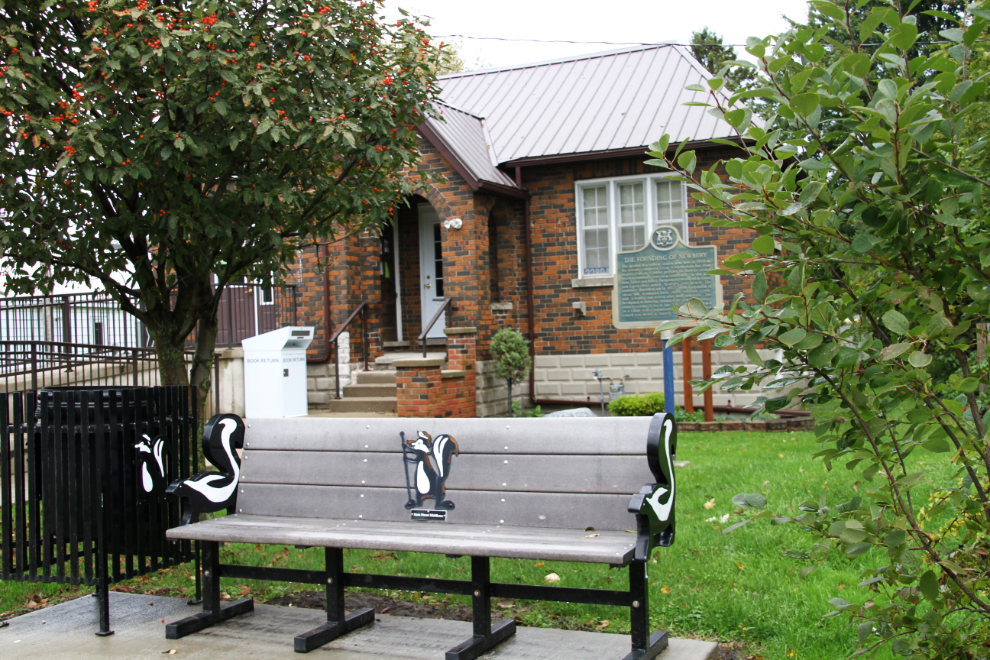
On the way to Newbury we went through Glencoe and it looked interesting so we stopped there for a late lunch. This is the view from the railway station.

The VIA Rail commuter train goes past the Glencoe station. Lunch was very good and very cheap, and we both left Glencoe feeling that it has “a good vibe” and would be a great place to live.
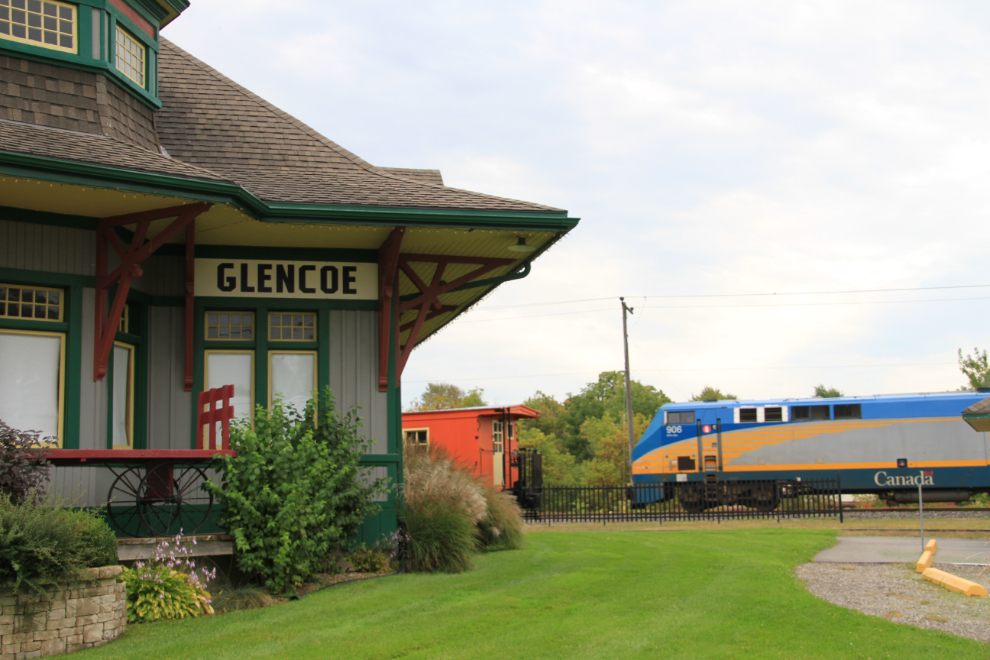
A little cemetery with nothing around except a single farm and an abandoned house stopped me. Most of the 300+ graves in the fairly well-tended Eddie Cemetery seem to date from the 1880s and 1890s, though the first burial there is recorded as being in 1845.

The beautiful abandoned house behind the cemetery.
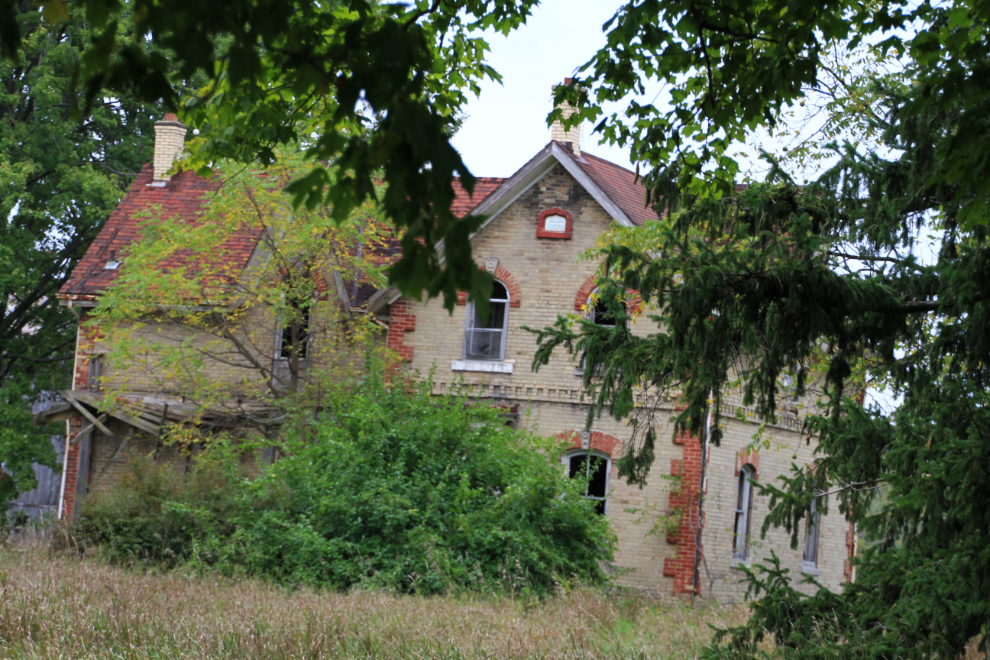
The humidity in Ontario is a surprise – walking out of an air-conditioned building is sometimes like getting slapped with a warm, wet towel. We got extremely heavy rain on Monday night, and this fence was steaming as the sun came up on Tuesday.
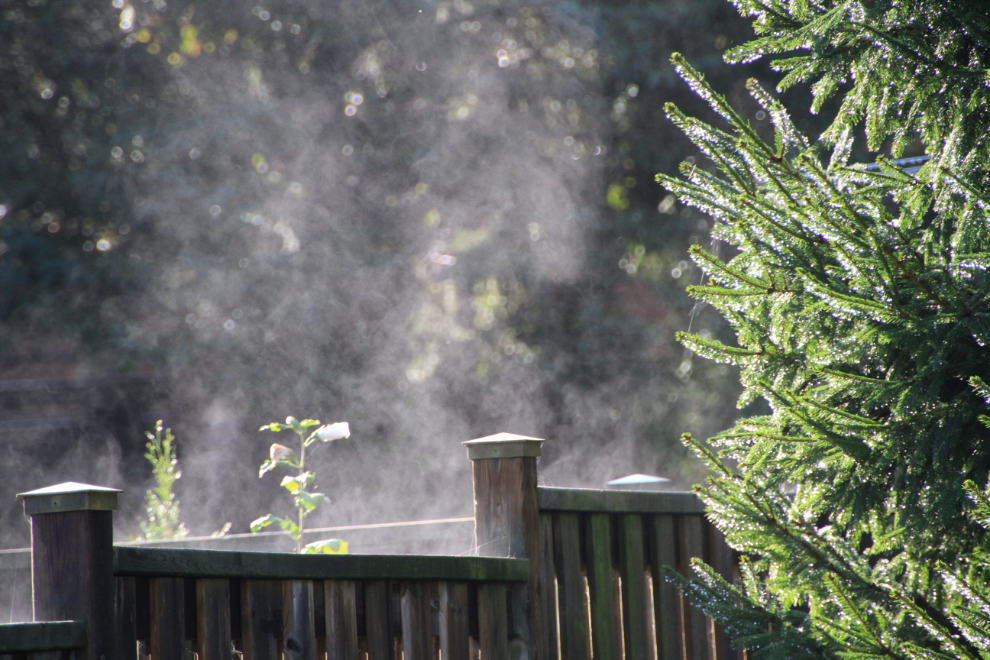
We broke Tuesday up into morning and afternoon touring with a couple of hours of visiting in between. The morning touring took us up to Lucan, and on the way we stopped at Devize’s Cheese so Cathy could get some of the cheese curd she remembered from when she lived here. I wasn’t impressed but she was happy 🙂
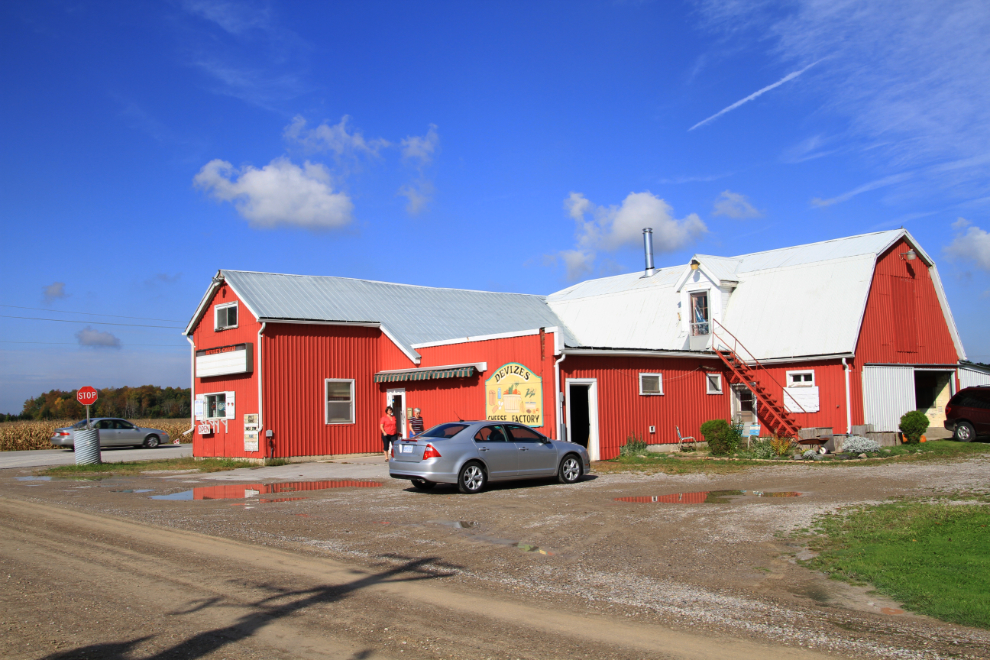
A side road across from the cheese store.

Lucan has an attractive downtown. This is the Wilberforce Inn.
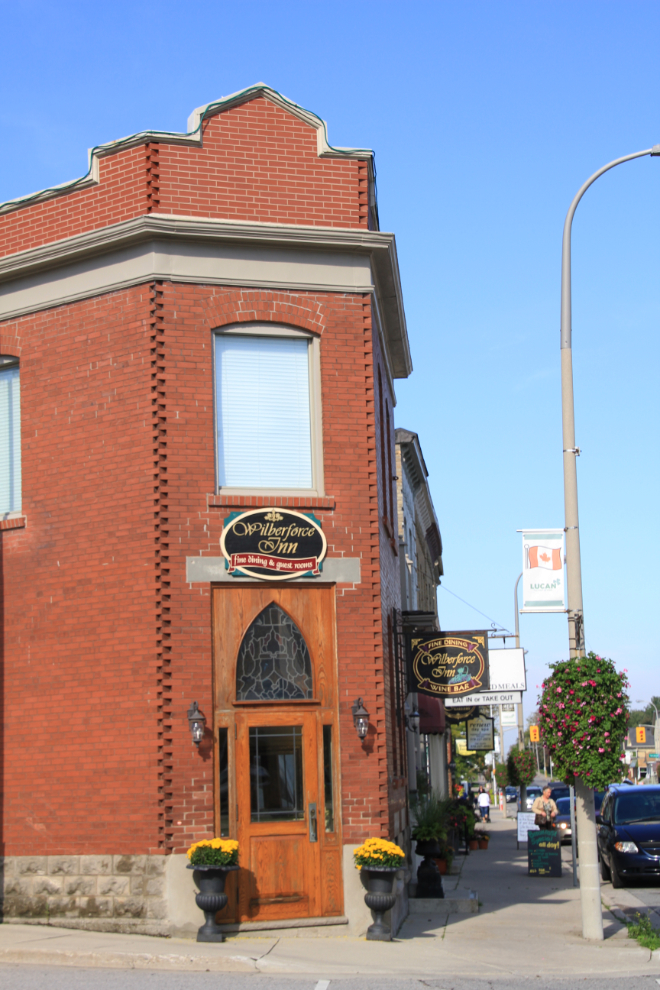
The main focus of the Lucan museum is the infamous murder of 5 members of the Donnelly family in 1880. This log cabin was the home of another pioneer family – it looks much like the Donnelly cabin did.

This is a replica of the monument that was on the Donnelly family grave until the church insisted that it be removed, apparently due to a combination of the facts that it describes each death as “murder”, and that it attracted too many tourists. The location of the original tombstone isn’t known, according to museum staff.

Some of the Donnelly photos and memorabilia.
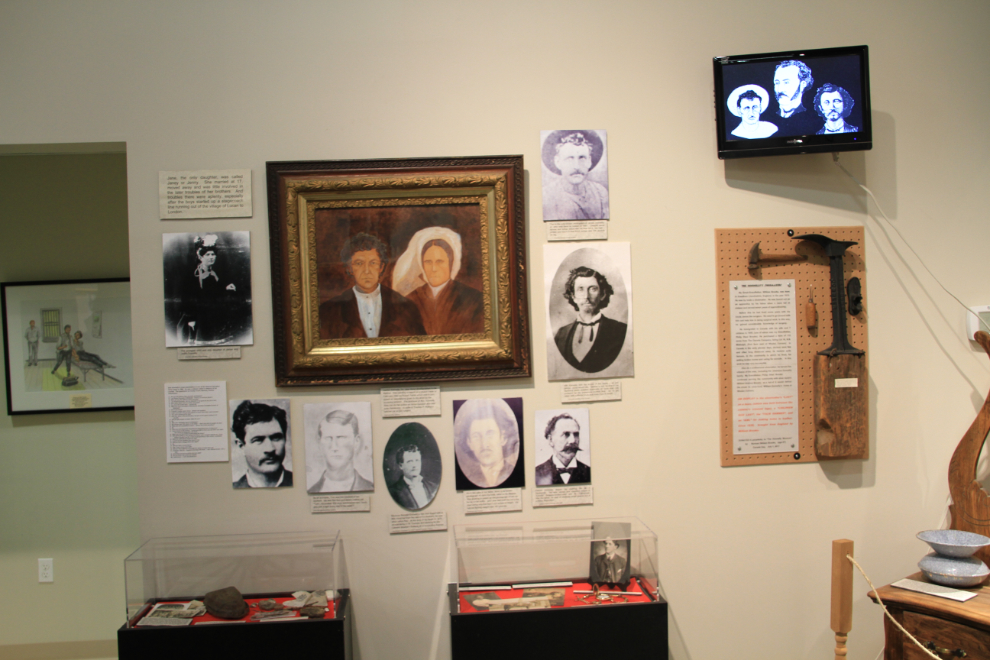
St. Patrick’s Catholic church, just south of Lucan, was built in 1858-59 in the Ontario Gothic style. The church’s cemetery is the location of the Donnelly family grave.
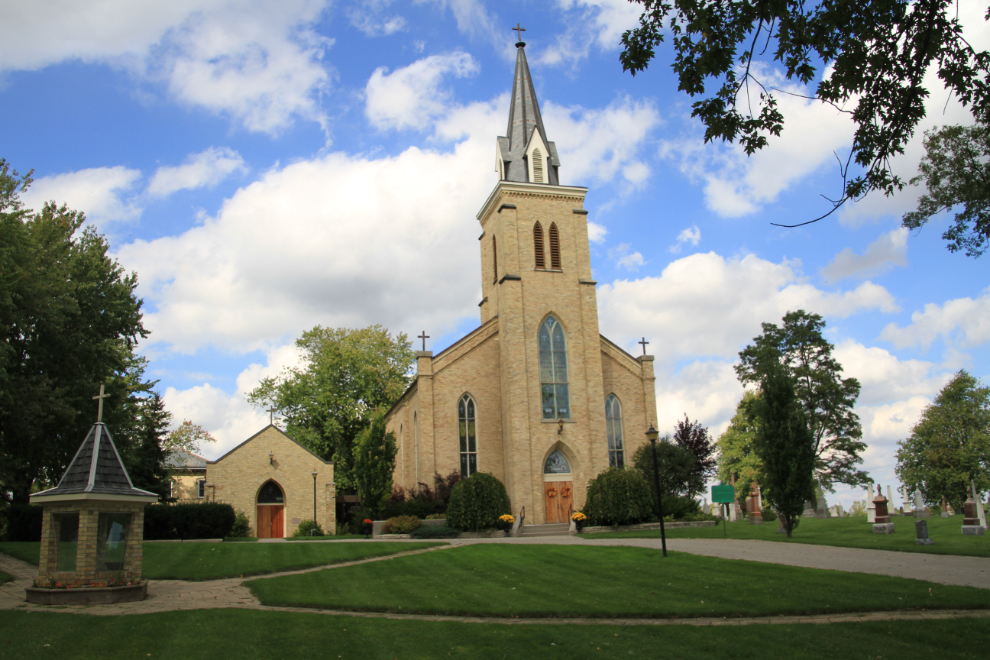
In the afternoon, we drove south to see some of the places that my father spent time during WWII. The first stop was at what was the R.C.A.F. No. 1 Technical Training School, where Dad received his training in aircraft sheet metal repair.
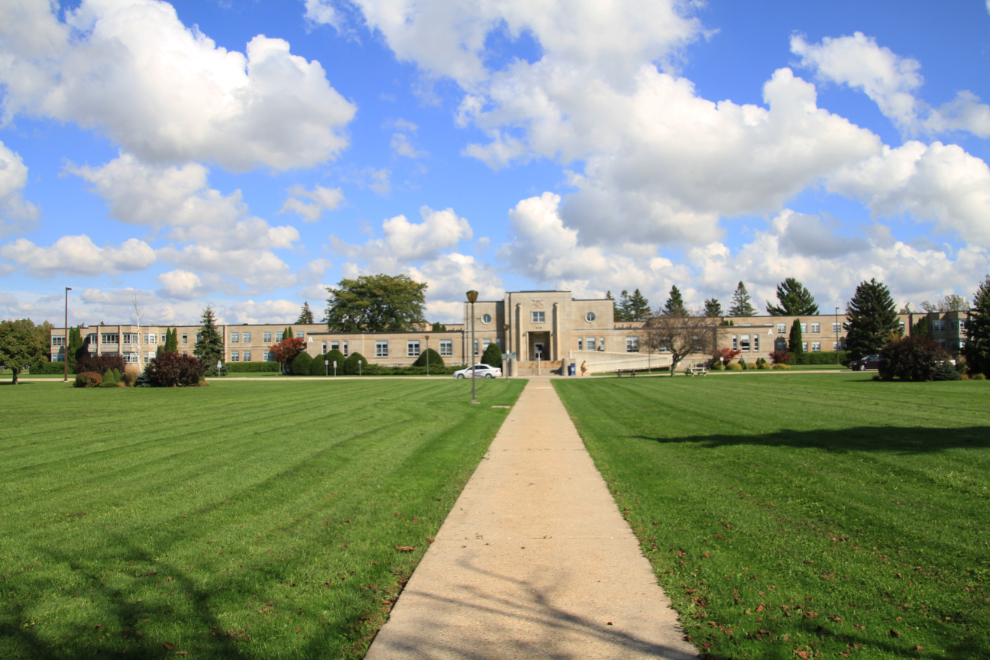
The curator of the school’s museum, Mike Baker, was a great help in helping me see some of the details of life here. Here a group of airmen arrive at St. Thomas by train.
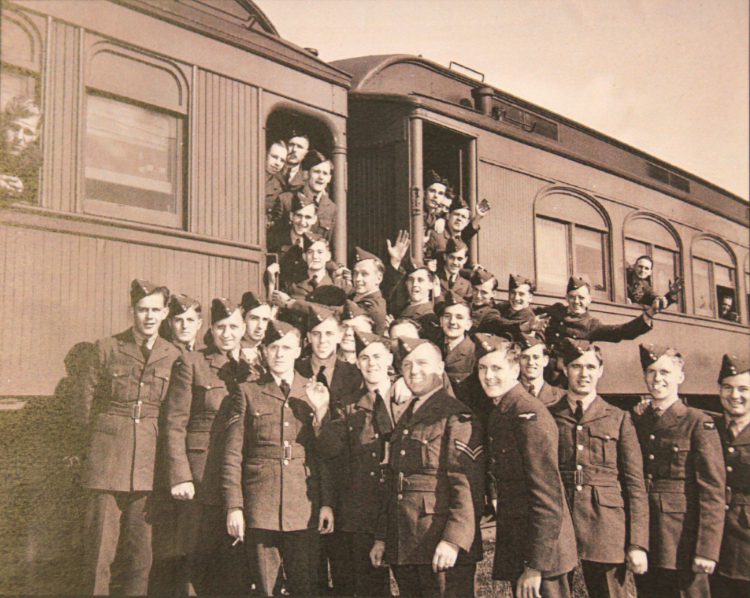
The background of this panel was the cover of a newsletter that went out regularly.
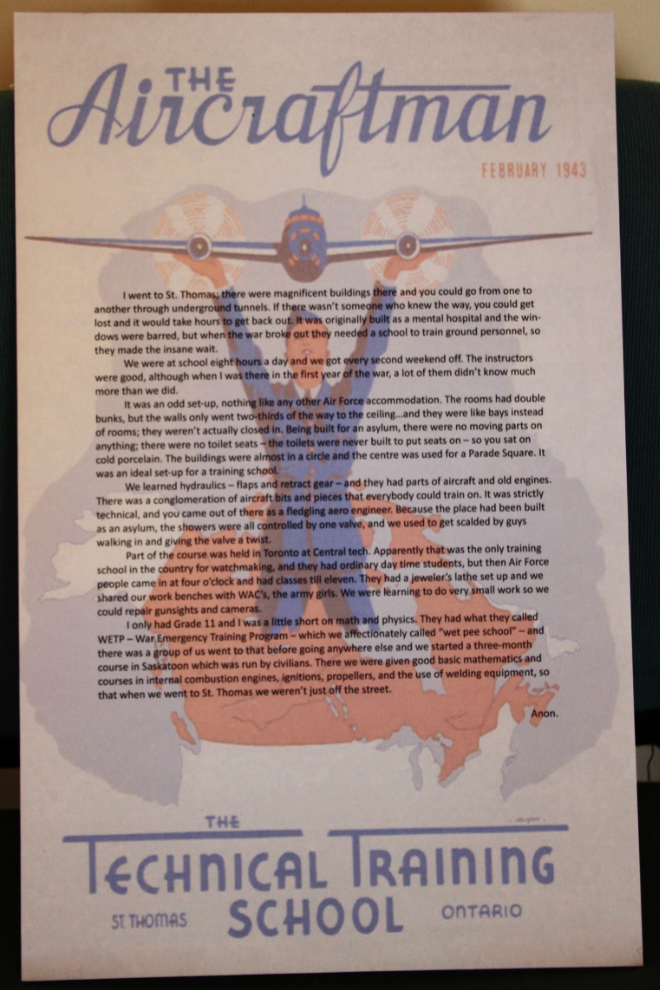
While the front of the complex is a psychiatric hospital (its original purpose in the 1930s), the rear sections appear to be derelict, and study is currently being done to decide what to do with the property.
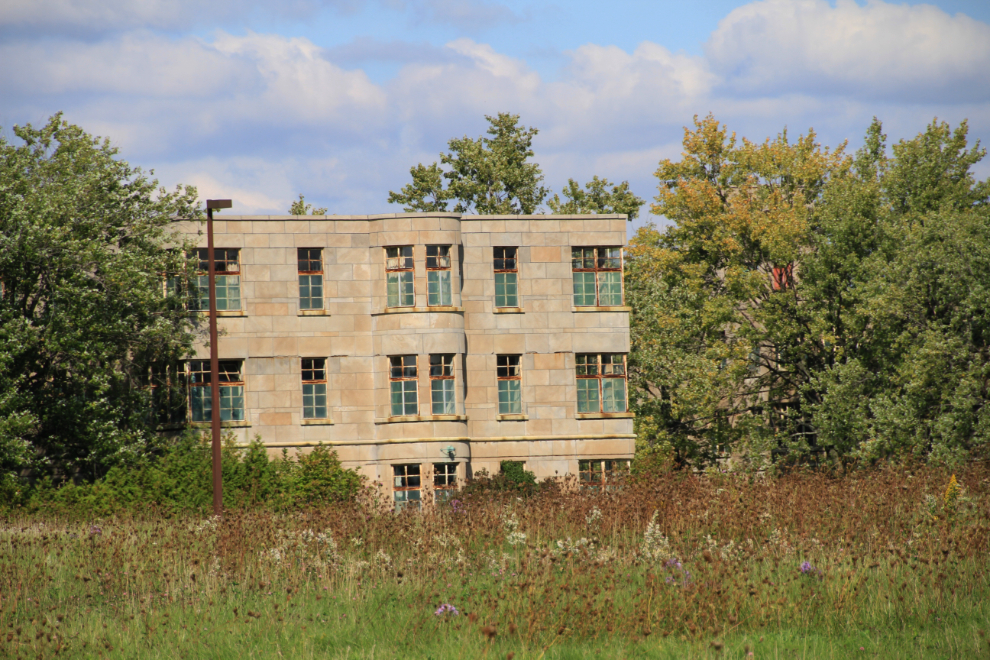
Port Stanley, on Lake Erie, was our next community – this was a recreation area for the airmen, with dances being the Port Stanley activity that Dad remembers most fondly.
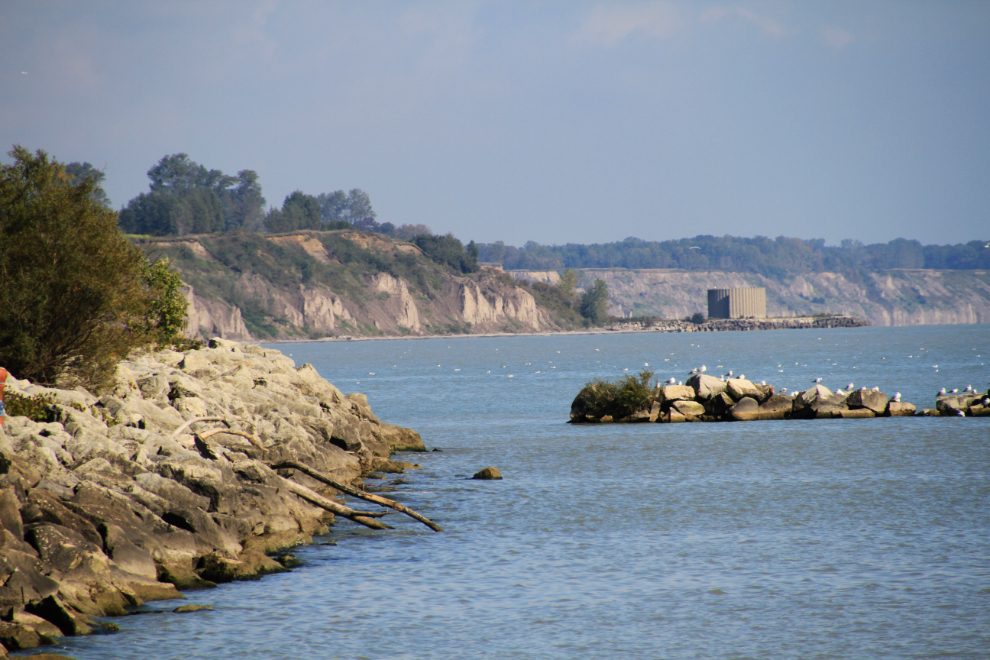
This flooded sidewalk at Port Stanley might be a good indicator of just how heavy the rains were the night before!
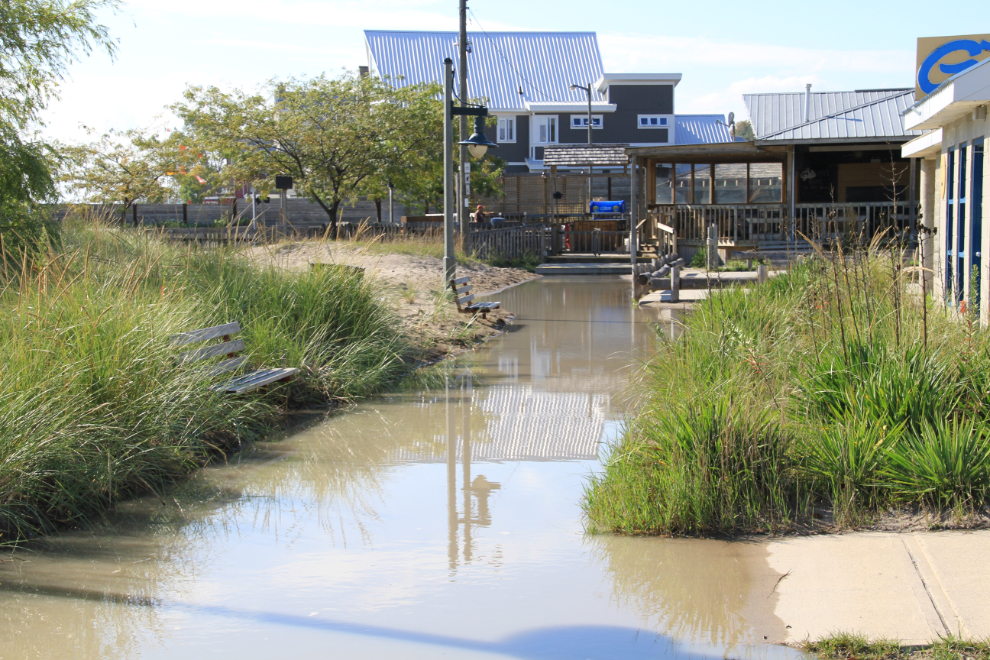
The wide beach at Port Stanley is beautiful, and though the water along the edge was muddy we walked in a few feet.
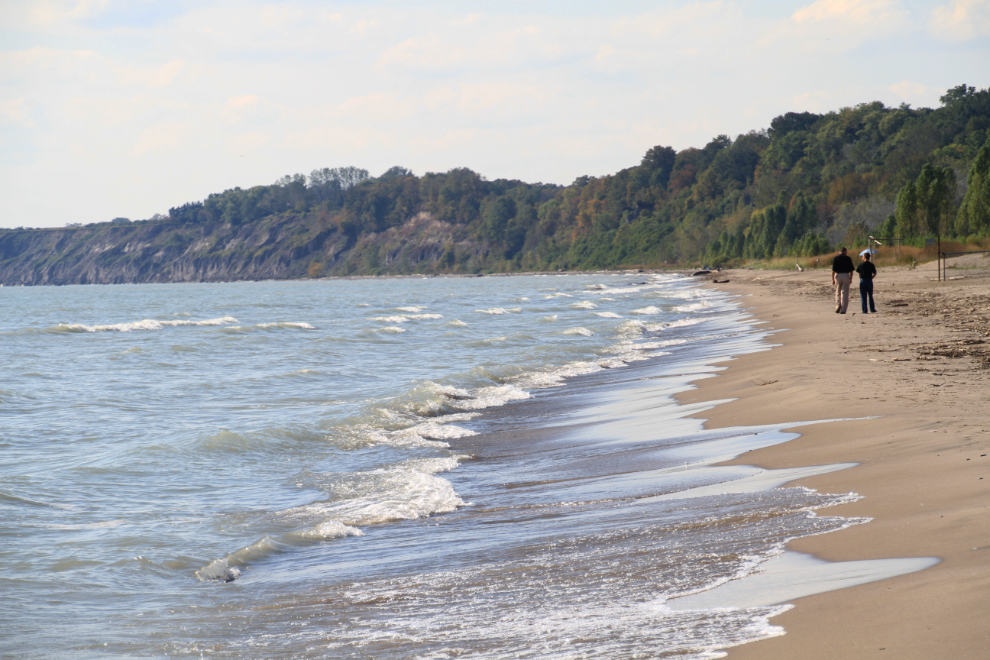
There are lots of fairly new homes both on the beach and overlooking it.

The drawbridge goes up every half hour if there are any boats wanting to get to the marina.
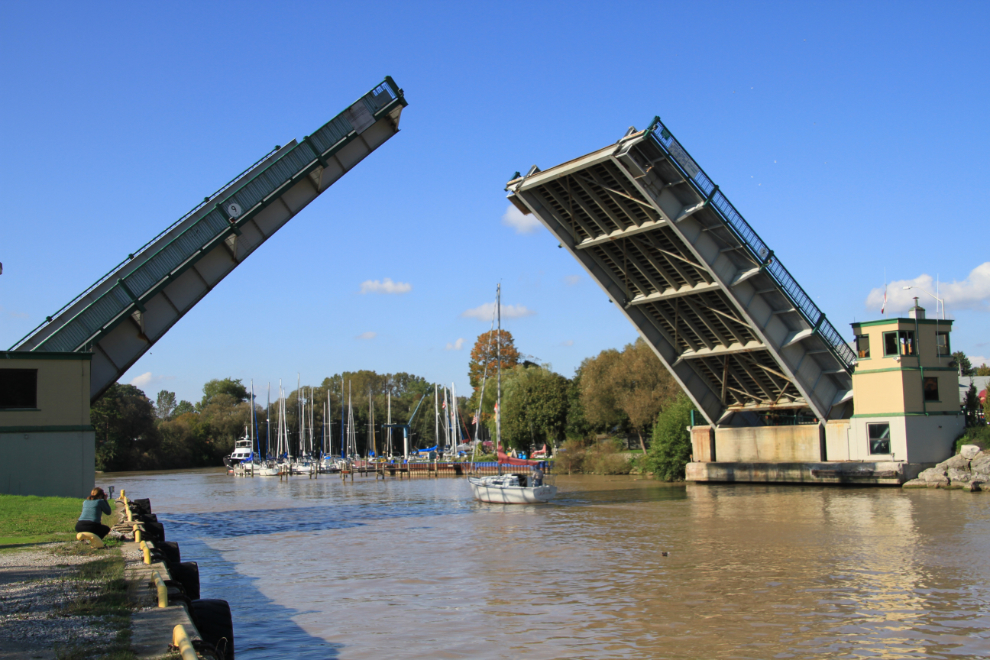
The Port Stanley tourist railway appeared to be closed for the season.
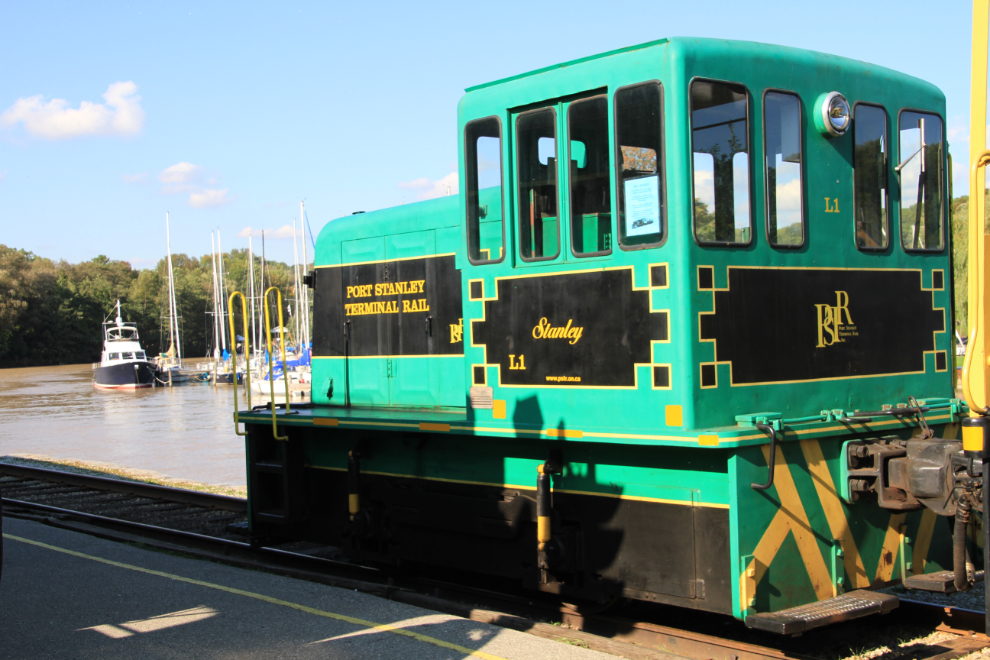
There were thousands of gulls hanging around a fish processing plant.
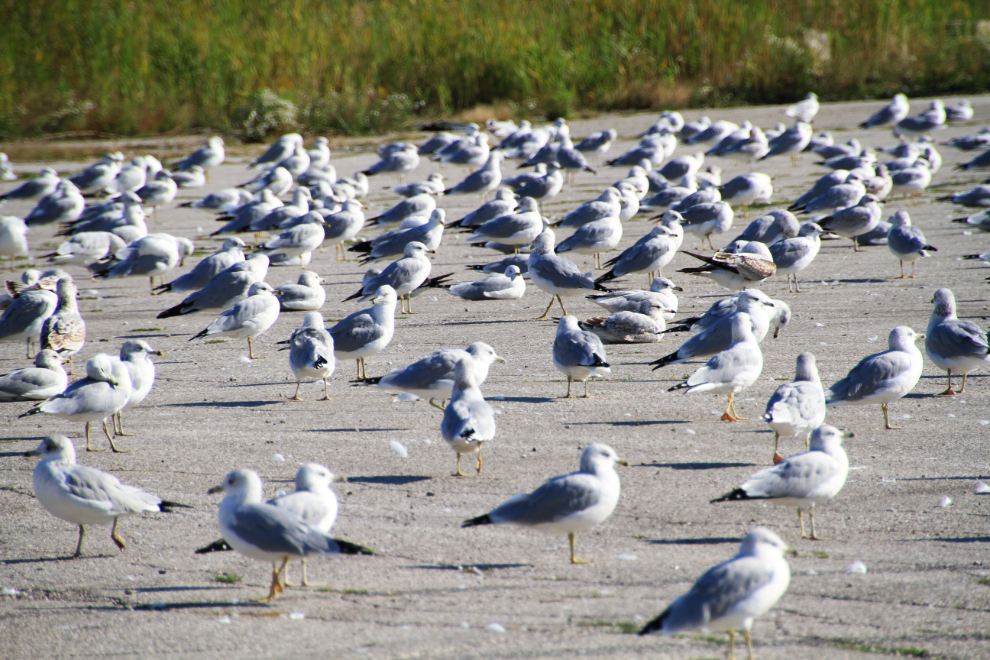
The Telegraph House is the finest of the Victorian homes we saw in Port Stanley. It was built in 1873, with a mix of Gothic and Italianate styles.
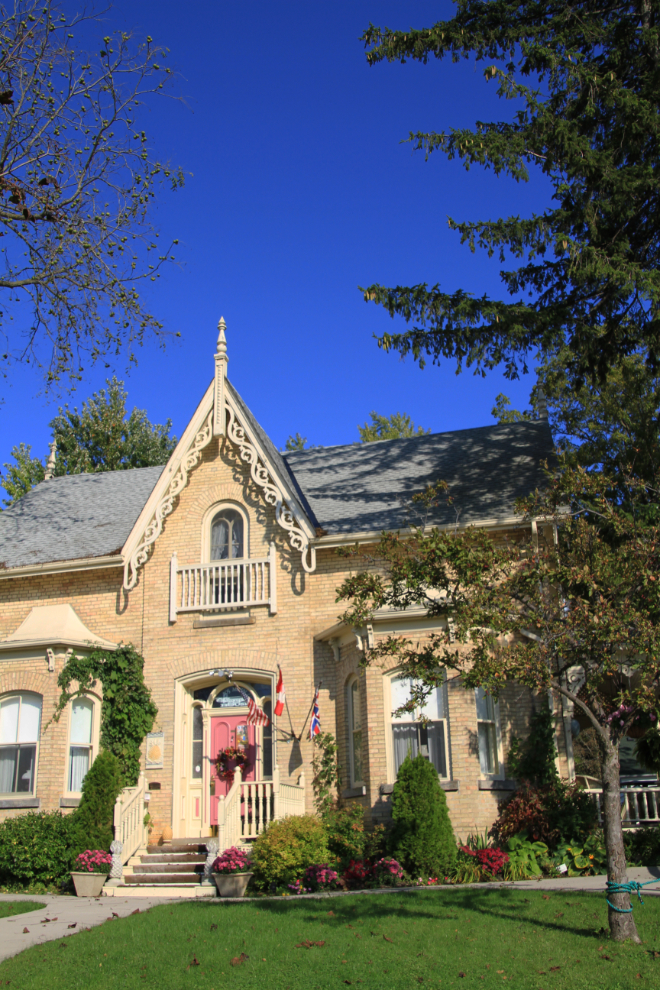
Leaving Port Stanley, we drove west to an area of cliffs overlooking Lake Erie. Although we had read about huge numbers of birds passing by these cliffs this time of year, we saw none.

This impressive railway testle is just west of St. Thomas.
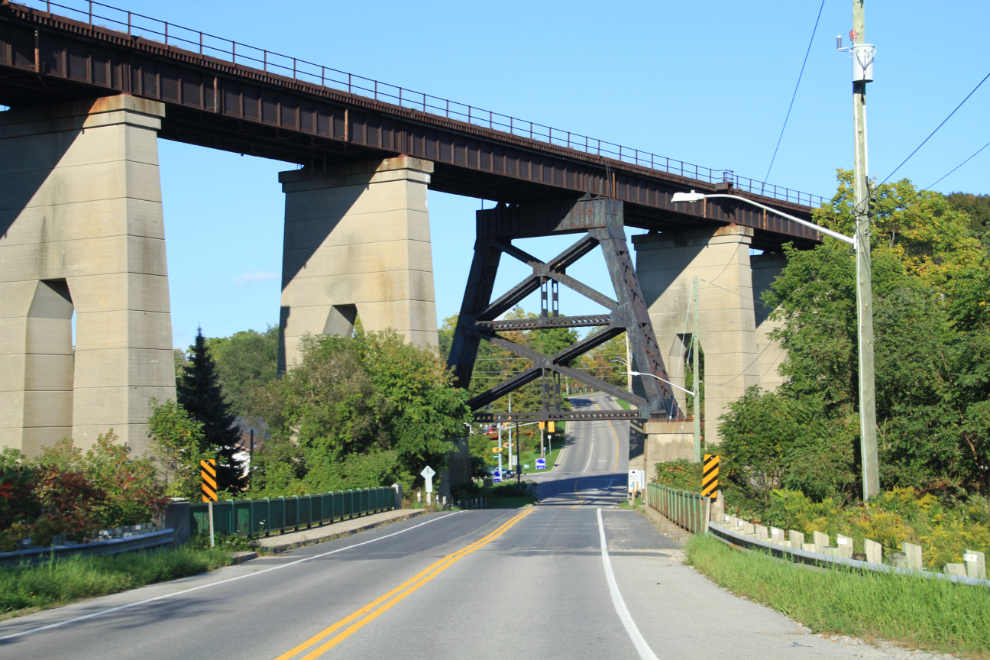
This is a statue of Jumbo, an elephant who escaped from a circus visiting St. Thomas in 1885 and was killed when he got hit by a train.
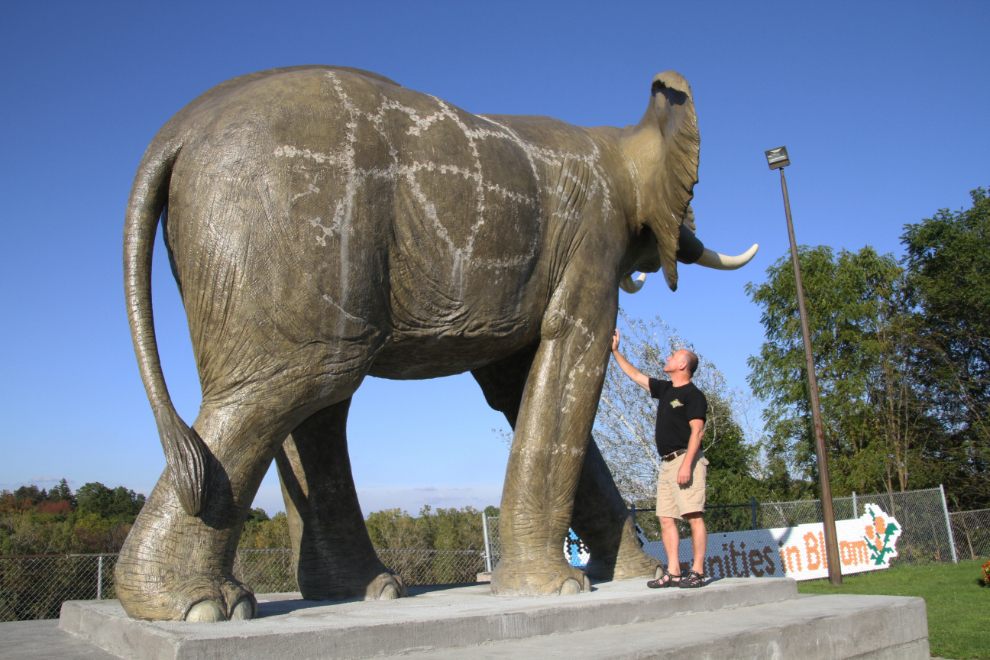
The Sutherland Press plant is one of the impressive industrial buildings remaining in St. Thomas.

A corner of the Canada Southern Railway station is being restored.
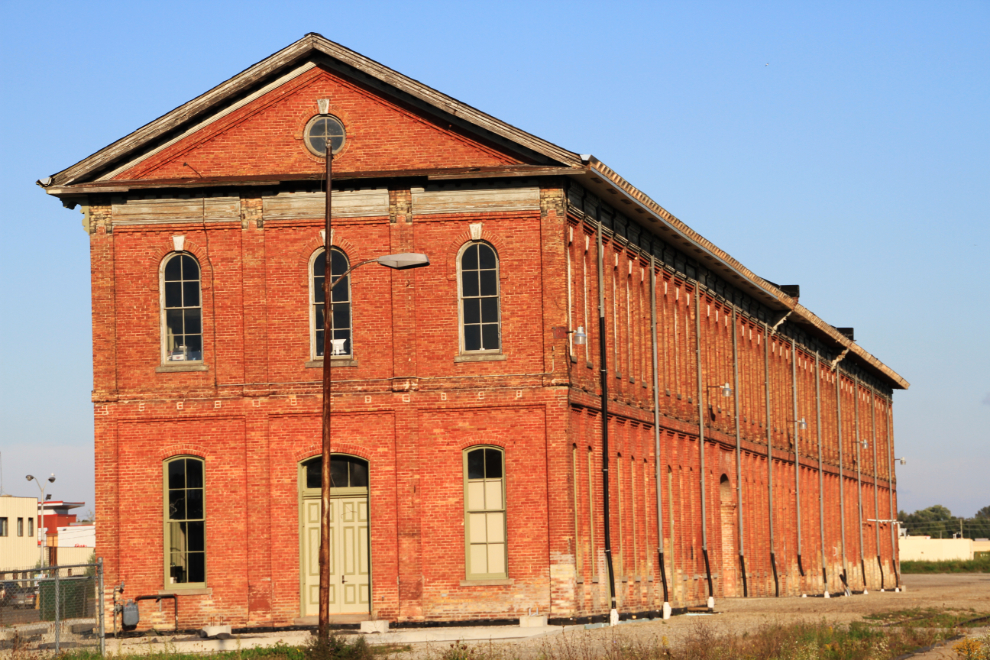
So far it’s been an interesting trip, as is every trip into new territory. Pleasant scenery, wonderful people and well-preserved history is a fine combination to make me want to see a lot more.